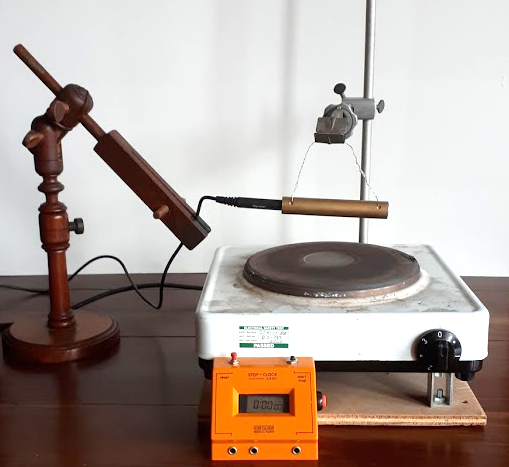- Home
- Semester and Timetable Information
- Study Physics
- Our Research
- Our People
- Careers and Alumni
- Seminars, News and Events
- Outreach and School Resources
- About the School
- What is Physics
- The Crawford Observatory
- Frequently Asked Questions
- UCC Futures Quantum & Photonics
- Supports
Cooling by Convection
If the temperature of a warm body, suspended in air, is greater than that of the surrounding air, the body will lose heat energy mainly by convection. In these circumstances, the rate of heat energy loss per unit area is directly proportional to the temperature difference between the body and the surrounding air. This is investigated in a very simple way. A a brass cylinder into which a computerised temperature sensor has been inserted is hung from a stand on the laboratory bench. The cylinder is heated by placing it above an electric heater. Once the cylinder has reached 50 ˚C, the heater can be removed and the cylinder allowed to cool. Thus a temperature—time plot for the cooling process may be obtained.
Through this experiment Newtonian cooling ( rate of heat loss of a body is directly proportional to the difference in the temperatures between the body and its surroundings) and the boundary layer (thin film of motionless air through which heat has to be conducted before being carried away by the convection currents outside the boundary layer) can be explored.

